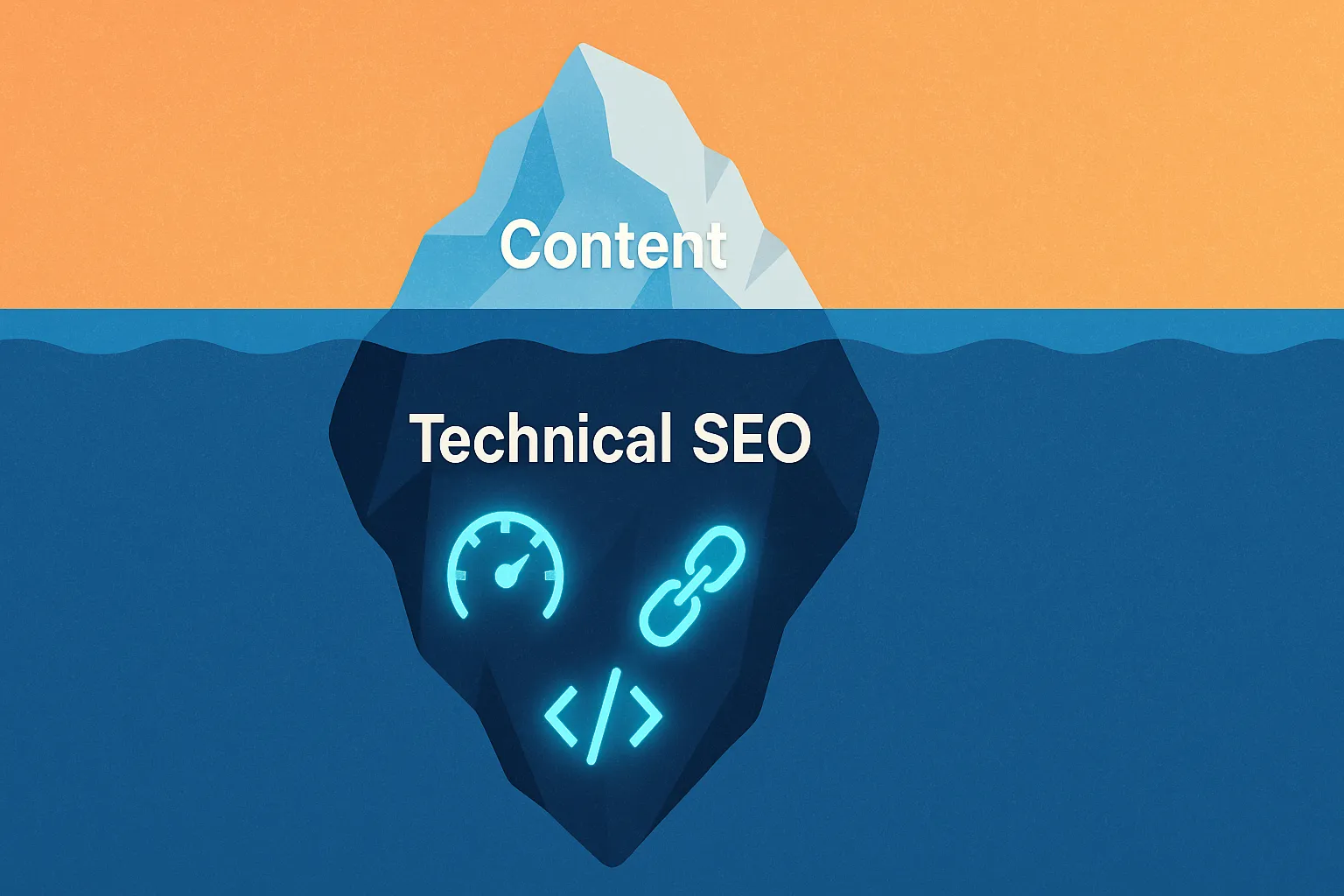It’s one of the most common frustrations in digital marketing: you’re creating excellent blog posts, you have a beautiful website, but your Google rankings are completely stuck. You’re doing everything right on the surface, so what’s going wrong underneath? The answer often lies in the hidden part of the SEO iceberg: technical SEO. If you’ve been searching for a professional SEO service near me, it’s likely because you suspect there’s a deeper issue.
This guide will expose three of the most common and damaging technical SEO issues that could be secretly sabotaging your website’s performance without you even knowing it.
What is Technical SEO? A Quick Analogy
Think of your website as a high-performance car.
- Content Marketing is the powerful engine that creates horsepower.
- Technical SEO is the chassis, the transmission, and the wheels.
Even with the most powerful engine in the world, you won’t win any races if you have flat tires or a broken transmission. Technical SEO ensures your website’s foundation is strong enough for Google to easily find, understand, and reward your great content.
3 Hidden Issues and How to Spot Them
Many SEO firms start with a deep technical audit because these foundational issues can stop a campaign before it even starts. Here are three to watch out for.
1. Poor Site Speed and Core Web Vitals
- The Problem: Slow-loading websites are a major ranking killer. Google knows that users are impatient; if a page takes too long to load, they leave. Google’s Core Web Vitals are specific metrics that measure a user’s experience with loading speed, interactivity, and visual stability. Failing these vitals can directly harm your ranking.
- How to Spot It: Use Google’s free Page Speed Insights tool. Just enter your website’s URL, and it will give you a performance score for both mobile and desktop, highlighting specific issues.
- The Fix: Common solutions include compressing image sizes, choosing a high-quality web host, and enabling browser caching.
2. “Crawlability” and “Indexability” Errors
- The Problem: Before Google can rank your website, its automated “bots” must be able to “crawl” (read) its content and “index” (store) it in their massive database. If Google can’t crawl or index your pages, they are invisible in search results. Common causes include:
- Broken Links (404 Errors): Links that lead to non-existent pages.
- Incorrect robots.txt file: This file can accidentally tell Google not to crawl important parts of your site.
- Orphan Pages: Pages that have no internal links pointing to them, making them hard for Google to find.
- How to Spot It: The “Coverage” report in the free Google Search Console tool is the best place to find these errors.
- The Fix: This often requires a technical expert to perform an audit, fix broken links, correct the robots.txt file, and improve the internal linking structure.
3. Thin or Duplicate Content Issues
- The Problem: Google wants to show unique, valuable content. If your website has many pages with very little unique content (“thin content”) or the same content appearing on multiple different URLs (“duplicate content”), it can dilute your authority and confuse search engines. This is a very common issue for e-commerce sites with product filters that create multiple URLs for the same page.
- How to Spot It: You can use free online tools like Siteliner to scan your site for duplicate content.
- The Fix: The most common solution is to use a “canonical tag.” This is a small piece of code that tells Google which version of a duplicated page is the “master” copy that should be indexed and ranked.
Frequently Asked Questions (FAQs)
Q1: Can I fix these technical SEO issues myself? Some basic fixes, like compressing an image, are possible for non-technical users. However, resolving crawl errors, editing site code, or correctly implementing canonical tags often requires the expertise of a developer or one of the more experienced SEO firms.
Q2: How often should I perform a technical SEO audit? A comprehensive technical audit should be performed at least once a year. Additionally, running smaller, regular health checks (e.g., quarterly) is a good practice to catch any new issues as they arise.
Q3: My website is new. Do I still need to worry about technical SEO? Absolutely. In fact, it’s the most important time. Building your website on a strong technical foundation from day one is the best way to ensure Google can index it properly and it can start ranking as quickly as possible.
Conclusion
Great content will always be king, but it can’t win the throne if its castle has a weak foundation. Site speed, crawlability, and content duplication are the invisible forces that determine whether your marketing efforts succeed or fail. By addressing these technical SEO issues, you clear the path for your excellent content to finally get the ranking it deserves.
A solid technical foundation is the first step in any local SEO campaign. See what comes next in our [10-Point Local SEO Checklist].
Feeling overwhelmed by the technical details? You don’t have to be an expert. Our SEO service near me includes a comprehensive technical audit to uncover and fix the hidden issues holding your website back. Contact DE10X today for a free website health check.




